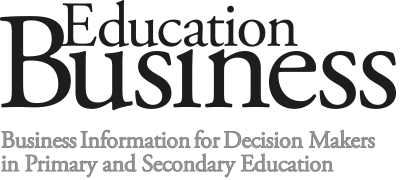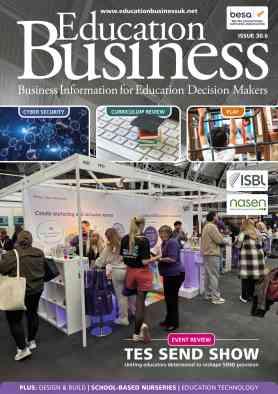
Technology with intention: turning digital tools into lasting impact
Too often, the discourse around education technology is dominated by abstract premises and long-term visions rather than being grounded and practical, writes Ben Brown, chair of trustees at Astrea Academy Trust and Governor at Eastfield Academy. So how can schools ensure any new technology investment is a real asset?
As both an educational trustee and Chair of Governors, I have seen first hand the immense potential of edtech for transforming teaching and learning. But I have also witnessed the challenges. When implemented well, technology can empower teachers, unlock creativity and drive school improvement. However, when applied without strategic intent or practical consideration, it risks becoming a burden – another system to learn, another box to tick.
Too often, the discourse around edtech is dominated by abstract promises and long-term visions. What is frequently lacking is a grounded, practical approach; how these resources can be integrated meaningfully into day-to-day teaching, and how they can address real challenges in schools.
Technology to empower, not burden
Governors can be asked to provide input on major decisions, including those around investment in digital tools or infrastructure. I suggest always starting by asking one question first: how will this support our teachers?
The best technology empowers teachers by reducing their workload, improving access to resources and making it easier to monitor progress. Too often, however, tech initiatives fail because they are overly complex or imposed without adequate consultation with staff. Intuitive, teacher-friendly tools can make a huge difference. When classroom technology is easy to use and fits into existing routines, it quickly becomes embedded in practice. But if it requires extensive training or feels like an added task, it rarely gains traction. As governors, we must ensure that any investment in technology starts with the user – teachers – and is shaped around their needs and capacity.
The case for ‘invisible’ technology
A key principle underpinning effective edtech implementation is the belief that technology should support – not supplant – the role of the teacher. The most valuable technological tools are those which enhance pedagogical delivery and alleviate administrative burdens, rather than requiring extensive retraining or altering fundamental teaching methods.
When edtech solutions work consistently and align with a teacher’s natural teaching style, they become second nature and act as another resource to support interaction and explanation. When they don’t work (or require frequent troubleshooting) they become a source of frustration that detracts from learning.
As governors, we are not expected to be technical experts. But we are responsible for supporting a school’s strategic vision and ensuring that resources deliver value. That means asking whether the resource will serve the long-term needs of the school and demonstrating that it is robust, future-proofed and compatible with the school’s wider digital strategy. Crucially, we must also be confident that it will improve the experience of teaching and learning in the classroom.
Using edtech for school improvement
Technology is not a silver bullet; but when aligned with a clear school improvement plan, it can be a powerful enabler of progress. It can drive improvements in curriculum delivery, staff development, pupil engagement and assessment practices. For example, digital platforms that allow teachers to share lesson resources or record CPD sessions can support consistency across subject areas or school sites. Tools that provide real-time feedback help teachers adapt their practice and identify areas for intervention. And simple classroom technologies – like audio transcription tools or shared displays – can enhance clarity and accessibility in teaching, particularly for pupils with additional needs.
From a governance perspective, we should ask how proposed technologies map onto existing improvement priorities. Is the aim to narrow gaps in attainment? Improve parental communication? Strengthen staff collaboration? When technology is introduced to serve a clearly defined need, it is far more likely to succeed.
Unlocking creativity and student voice
One of the more inspiring developments I’ve seen is how technology can unlock creativity and amplify student voice – particularly for pupils who might not otherwise feel confident contributing in a traditional classroom setting. I have observed classrooms where pupils use digital tools to share work, present ideas or collaborate on projects in real time. Edtech solutions have the potential to transform the classroom dynamic – from passive to participatory, from teacher-led to co-constructed. For some students, especially those with special educational needs (SEND) or English as an additional language (EAL), these modes of engagement can be particularly empowering.
Governors have a duty to help schools ensure all pupils can thrive. In reviewing strategies for teaching and learning, it is vital to consider how technology might provide alternative pathways for expression, creativity and inclusion.
Technology and the digital divide
Any discussion about edtech must acknowledge the digital divide. Schools are grappling with very different contexts and starting points when it comes to technology; some with cutting-edge infrastructure, others struggling with basic connectivity. The gap between what is possible and what is practical can be wide.
This makes strategic planning and procurement even more important. In schools where budgets are tight, every pound must deliver maximum impact. In such cases, governors can work effectively with school leaders to phase in technology gradually, explore grant opportunities or prioritise investments that benefit the widest number of pupils. In the context of multi-academy trusts, leaning into economies of scale for the procurement of devices and software licenses can make all the difference in affordability.
Edtech does not necessarily have to mean the latest device in every student’s hand. Often, it is about making sensible, sustainable choices that align with the school’s context and long-term ambitions.
Governance: the role we play
While school leaders are responsible for day-to-day decisions, governors and trustees play a vital strategic role in ensuring any use of edtech aligns with the school’s wider vision and priorities. This requires a thoughtful and inquisitive approach. Governors should be asking the right questions to help ensure decisions are driven by teaching and learning needs, not by appearances or marketing.
Regular review is equally important, including asking whether the technology is delivering the intended benefits, and what can be learned from its implementation. By applying the same level of scrutiny to edtech as we do to areas such as safeguarding, finance or curriculum, governors can ensure that technological investment remains purposeful and in service of providing high-quality education for every pupil.
Conclusion
Educational technology is not a separate agenda. It is a tool – sometimes revolutionary, sometimes simple – that must be woven into a school’s strategic approach to teaching and learning. From a governor’s perspective, the most important thing is not what the technology can do, but what it actually does in the hands of teachers and students.
By staying focused on purpose, supporting our school leaders to make evidence-informed decisions and listening to the voices of staff and pupils, we can help ensure technology becomes an asset, not a burden. And in doing so, we play our part in shaping schools that are forward-looking, inclusive places where creativity can flourish.
About the author
Ben Brown is a governor at Eastfield Academy, as well as being chair of trustees at Astrea Academy Trust. He is also head of UK & Ireland at Optoma.
Latest News
09/01/2026 - 10:13
The measure, added to the Children’s Wellbeing and Schools Bill, delivers on the commitment made in the government’s manifesto to bring multi academy trusts into the inspection system.
08/01/2026 - 10:30
The government is launching a new app allowing students to view their GCSE results on their phones for the first time from this summer.
08/01/2026 - 09:45
Education Business LIVE has announced that Professor Samantha Twiselton OBE of Sheffield Hallam University will speak at the event in March 2026, delivering two thought-provoking sessions focused on initial teacher training and SEND provision.
07/01/2026 - 10:10
Solve for Tomorrow is a free, curriculum-linked programme which is mapped to Gatsby Benchmarks 4, 5, and 6, helping teachers embed careers education without adding to workload.
06/01/2026 - 10:24
London's universal free school meals programme has not led to improvements in pupil attainment during its first year, but has eased financial pressure and reduced stress for families.







